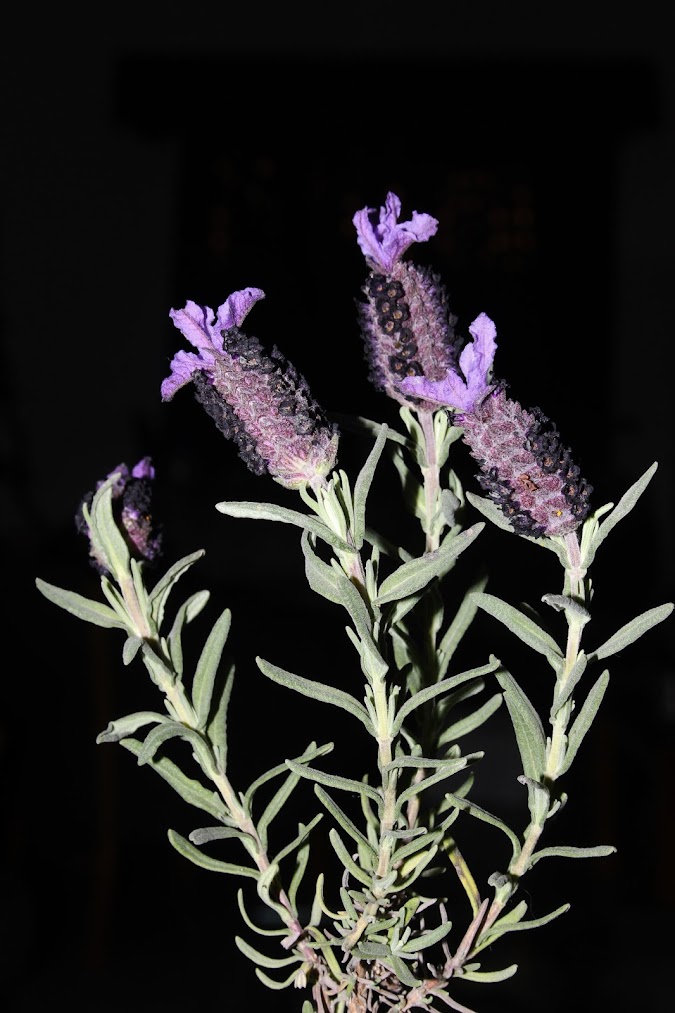
 Lavandula stoechas (French lavender, Spanish lavender, or topped lavender) is a species of flowering plant in the family Lamiaceae, occurring naturally in Mediterranean countries.
Lavandula stoechas (French lavender, Spanish lavender, or topped lavender) is a species of flowering plant in the family Lamiaceae, occurring naturally in Mediterranean countries.
 An evergreen shrub, it usually grows to 30–100 cm (12–39 in) tall and occasionally up to 2 m (7 ft) high in the subspecies luisieri. The leaves are 1–4 cm long, greyish and tomentose.
An evergreen shrub, it usually grows to 30–100 cm (12–39 in) tall and occasionally up to 2 m (7 ft) high in the subspecies luisieri. The leaves are 1–4 cm long, greyish and tomentose.The flowers, which appear in late spring and early summer, are pink to purple, produced on spikes 2 cm long at the top of slender, leafless stems 10–30 cm (4–12 in) long; each flower is subtended by a bract 4–8 mm long. At the top of the spike are a number of much larger, sterile bracts (no flowers between them), 10–50 mm long and bright lavender purple (rarely white)
This species is more fragile than common lavender (Lavandula angustifolia), as it is less winter hardy; but harsher and more resinous in its oils. Like other lavenders, it is associated with hot, dry, sunny conditions in alkaline soils. However, it tolerates a range of situations, though it may be short-lived.
Selected forms are grown as ornamental plants. The cultivar 'Willow Vale' has gained the Royal Horticultural Society's Award of Garden Merit.
L. stoechas is used commercially in air fresheners and insecticides. Flower spikes have been used internally for headaches, irritability, feverish colds and nausea, and externally for wounds, rheumatic pain and as an insect repellent. From Wikipedia, the free encyclopedia
Photos Kornos 2/3/2015 by George Konstantinou




No comments:
Post a Comment